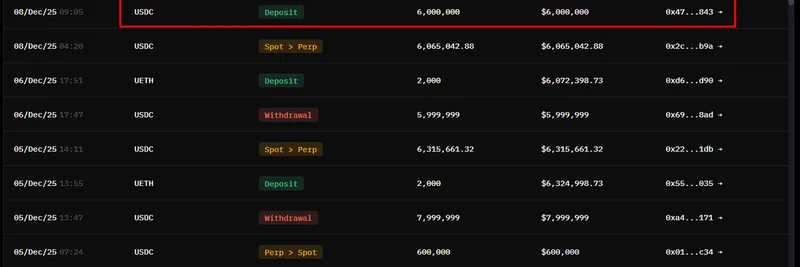Hey there, crypto fans! If you're keeping an eye on the blockchain world, you might have caught this recent tweet from BSCNews highlighting VeChain's Hayabusa upgrade. They're calling it potentially the most significant update in VeChain's history, and for good reason. Let's break it down in simple terms, so you can grasp why this matters without getting lost in the tech jargon.
What Is the Hayabusa Upgrade All About?
Named after the peregrine falcon—known for its incredible speed and precision—the Hayabusa upgrade is the second phase of VeChain's Renaissance roadmap for 2025. At its core, it's moving VeChainThor from a Proof-of-Authority (PoA) system, where a limited number of trusted nodes handle validation, to a Delegated Proof-of-Stake (DPoS) model. This shift means more people can get involved in securing the network, making it more decentralized and resilient.
VeChain, if you're new to it, is a blockchain platform focused on real-world applications like supply chain tracking and sustainability. It powers over 4 million users through tools like VeBetterDAO and has big-name partners such as Walmart, Boston Consulting Group, UFC, and Franklin Templeton. This upgrade builds on that foundation, aiming to make the network faster, more efficient, and ready for even bigger enterprise adoption.
The Roadmap: From Proposal to Launch
The journey to Hayabusa started with a governance proposal on VeVote in mid-August 2025. Voting kicked off on August 18 and wrapped up by August 25, with unanimous approval hitting quorum in just five hours—that's how excited the community was! The testnet went live in early September 2025, giving developers and users a chance to poke around and iron out any kinks. If all goes smoothly, the mainnet launch is slated for late December 2025, right at the end of Q4.
This timeline shows VeChain's commitment to community-driven decisions, ensuring everyone has a say in the network's future.
Key Features You Need to Know
So, what makes Hayabusa stand out? Here's the rundown:
Consensus Overhaul: Goodbye PoA, hello DPoS. Now, anyone holding at least 25 million VET can become a validator. If that's not you, no worries—you can delegate your stakes to validators and even vote on them. This spreads out the power, beefing up security and getting the community more involved.
Staking and Rewards System: Rewards are now tied directly to staking and validator performance. Delegators get a cut too. Plus, transaction fees paid in VTHO (VeChain's gas token) feed into the reward pool, with dynamic adjustments based on network activity.
Wallet and Tool Integrations: The VeWorld wallet makes staking a breeze. There's also the StarGate program with tiered options, like the Dawn Node requiring just 10,000 VET minimum. It comes with a hefty 5.48 billion VTHO in bonus rewards over six months to kick things off.
Partnership Boosts: VeChain's teaming up with heavy hitters like BitGo for secure custody (with $250 million in insurance), Crypto.com for better liquidity and trading, and Keyrock as a validator. These collaborations make the ecosystem more robust.
On the tech side, Hayabusa adds Ethereum Virtual Machine (EVM) compatibility and upgrades to JSON-RPC, making it easier for developers to build cross-chain apps and integrate with other blockchains.
Tokenomic Shifts: Big Changes for VET and VTHO
This is where things get really interesting for holders. The upgrade shakes up the tokenomics to reduce inflation and encourage active participation:
VTHO Updates: No more passive generation of VTHO just for holding VET. Instead, you earn it through staking, like via StarGate. Unclaimed or burned VTHO from transactions creates a deflationary pressure, potentially increasing its value as network demand grows. Fees are split: some burned, some redistributed to stakers.
VET's Role: As the governance token, VET benefits from lower inflation and stronger incentives to stake. The minimum for basic staking is 10,000 VET, aligning holders' interests with the network's health and sustainability goals.
These changes aim to make the tokens more valuable over time, driven by real usage rather than passive holding.
Technical Advancements Under the Hood
Beyond the user-facing stuff, Hayabusa ramps up scalability as a Layer 1 blockchain, perfect for DeFi and tracking real-world assets. The DPoS model reduces dependency on a few nodes, while EVM compatibility opens doors for seamless interactions with Ethereum-based projects. Developers get better tools, and the whole network ties rewards to actual activity, fostering a healthier ecosystem.
What Does This Mean for the Crypto Space?
In a nutshell, Hayabusa positions VeChain as a more decentralized, user-friendly platform that's attractive to both enterprises and everyday crypto users. With enhanced security and community involvement, it could draw in more institutional players, boosting adoption. As of early September 2025, VET was trading around $0.023, and some analysts are eyeing a breakout above $0.03 if these tokenomics deliver.
If you're into blockchain for supply chain or sustainability, this upgrade is a big deal. It shows how projects like VeChain are evolving to stay competitive in a fast-moving industry. For more details, check out the full article on BSC News.
Stay tuned for more updates on meme tokens and blockchain innovations right here at Meme Insider—we're all about helping you navigate the wild world of crypto!

